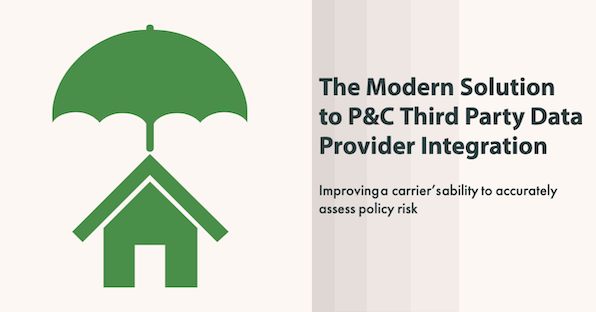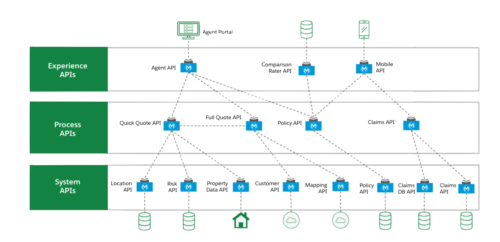A Common Sense Approach to Digital Transformation Backed by a 60-year-old Framework
Green Irony has always aligned our organization’s success to our customers. I started the company with a bet that Salesforce provided a superior technology platform that would allow our highly-skilled engineering teams to attack digital transformation initiatives more quickly and effectively. Having to deal with fewer “moving parts” with technology would enable our teams to focus more on other critical factors for delivering successful digital transformation outcomes.
Five years later, I can say that Salesforce’s platforms have not disappointed. Marc Benioff continues to evolve his technology vision and software offerings on the fly, giving organizations better tools than they have EVER had at their disposal for accomplishing their business objectives. Our team at Green Irony, effectively trained on these platforms, is capable of delivering scalable business value FAR faster and with fewer problems than we were without these platforms at our disposal.
There’s a but.
But, we’ve found that it isn’t enough to just be the best at delivering business outcomes using Salesforce and MuleSoft. There was another key set of variables limiting our success, and Green Irony needed a set of well-defined offerings to better address these inhibitors to successful outcomes.
Digital Transformation Isn’t Just Technology
At its core, digital transformation is about transforming a “normal” corporate entity to operate more like a tech company. Ideally, this transformation merges the advantages of the existing corporate brand with the scale advantage of tech “disruptors.” A well-executed transformation results in the business having fine-grained control over processes that drive critical business metrics impacting revenue and profitability. These goals involve more than merely bringing in software platforms. Does creating a world-class mobile app alone make you Uber? And why do 70% of digital transformations fail?
The answers to these questions lie within the common sense of a 60-year-old framework.
The PPT Framework that was created in the 1960s says, to paraphrase: People, Process, and Technology must live in harmony for an organization to operate at a high level. People do the work and processes govern how they do it. If technology “levels up” significantly through “Tech Modernization,” it stands to reason that the other two elements of the PPT framework would need to support this change.
Too many enterprises embarking on Digital Transformation ignore this common-sense wisdom.
Customers bring in modern technologies like Salesforce and MuleSoft and expect to wave Marc Benioff’s magic wand over their existing technology landscapes, perform anIT project, and deliver a business outcome fit for Marc’s next Dreamforce keynote. They parachute these shiny new platforms into their existing IT operating environments, say phrases like, “let’s do a base implementation,” and tell their teams to go. Chaos erupts.
This approach is counterproductive to the organization’s goals.
Under this “strategy,” implementations are executed by People trained to enhance and support the existing legacy Technology. These People, with minimal training, set out to deliver capabilities on new Technology platforms using IT Processes that were defined for the older Technologies. These legacy Processes were also designed with different goals in mind than what’s necessary to succeed at digital transformation.
People and Process misalignment in digital transformation have caused me to personally witness the following Corporate IT Horror Stories:
- Customer buys MuleSoft for agility; Enterprise Architecture carves up processes for taking the “Donkey Work” in-house, increasing cost and eliminating MuleSoft’s agility
- Customer purchases MuleSoft to accelerate development; IT does not train staff on MuleSoft and continues to unknowingly build its own in-house MuleSoft “competitor” on AWS
- Customer acquires Salesforce to move fast; PMO leverages legacy KTLO processes that stifle innovation and grind the Software Supply Chain to a halt.
- Customer hires high-end, dedicated platform consulting experts; point-and-click Salesforce administrators call the shots on architectural strategy
These stories will be explored in more detail at a later date, but they all have one thing in common: they have nothing to do with technology. They arise because the Technology leg of the three-legged PPT stool has significantly “outgrown” the other two legs when Salesforce and MuleSoft enter the equation in a technology modernization effort.
So no, we can’t be Uber just by virtue of having a compelling mobile application. Uber has evolved its People, Processes, and Technology in TANDEM to BECOME Uber and OPERATE like Uber. And transformations, even with a great technology platform strategy, fail without the appropriate People and Process to bring that Technology platform strategy into motion the RIGHT way.
A Modern IT Operating Model
Building world-class People & Process capabilities to match the Technology capabilities of Salesforce and MuleSoft does not happen overnight. At Green Irony, our objective is to help our customers maneuver around this constraint, accelerate their Digital Transformation goals, and EVOLVE these other two legs of the stool as we move through the roadmap.
A well-run digital transformation engagement focuses on getting new business value in the hands of customers as quickly as possible, analyzing data, and rapidly evolving the technology based on the analysis. A successful process for delivering on these goals needs to be agile and it needs to be capable of getting right-sized capabilities to the market quickly. We need fast Software Supply Chain cycle times, continuous feedback on metrics that matter, and continuous evolution of the technology product with capabilities delivered to the end customer regularly.
This type of model is much more Silicon Valley than it is Corporate IT.
Existing Corporate IT operating models are geared toward keeping core day-to-day operations running smoothly and minimizing risk from even small changes. Resources are deployed on siloed projects with rigid schedules and limited visibility into upstream or downstream implications in the software supply chain. There is very little in common between the objectives or operating models used here and those that are used in well-run digital transformation engagement.
The core operation must keep running smoothly as digital transformation capabilities are released quickly. Therefore, both portfolios of processes are required, each with specific purposes for the organization.
Green Irony’s Market Response
Green Irony is already delivering exponential value using MuleSoft Anypoint Platform and Salesforce. We’re evolving our offerings and our messaging to fully embrace what we’ve always been: a bridge between your existing IT operation and the business. We operate like Silicon Valley because it’s in our DNA to do so. We provide the People and Processes required to fuel your digital transformation goals while you mature your own internal operating models to match the needs of technology product development. This evolution doesn’t happen overnight, and our offering strategy is focused on ensuring it happens in a way that fuels technology innovation, protects the in-flight technology investment, and sets our customers up for ongoing success.
Our refined commercial offerings and messaging will focus on several key areas:
- Creating a repeatable Software Supply Chain that rapidly delivers business value to our customers’ customers
- Measuring, analyzing, and shortening the cycle time of this supply chain, fueling rapid delivery of on-demand capabilities to customers
- Leveraging technology platforms and tooling that enable the rapid rollout of high-impact business use cases at scale
- Optimizing future data access using MuleSoft, increasing the “clock speed” of the business by reducing the critical path of the Software Supply Chain
Our mission at Green Irony is to change the way that our customers think of delivering technology and to level up their organization’s ability to accomplish the main goal of digital transformation: Operate like a tech company and combine the advantages of that operating model with their own. These offerings will help our customers do just that.







